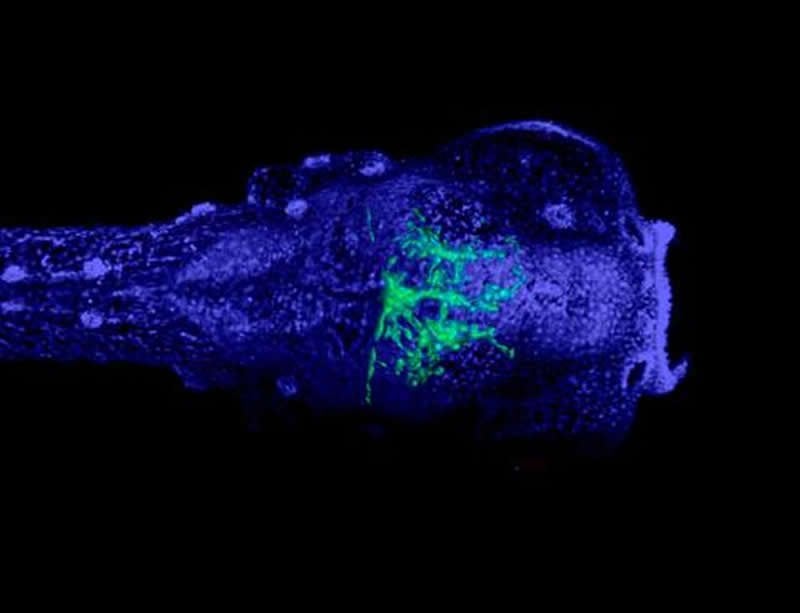Summary: Using big data, researchers have developed a new computer algorithm capable of analyzing genetic and pharmacological information to suggest new treatment options for neuroblastoma.
Source: Uppsala University
Using a computer algorithm, scientists at Uppsala University have identified a promising new treatment for neuroblastoma. This form of cancer in children, which occurs in specialised nerve cells in the sympathetic nervous system, may be life-threatening. In the long term the discovery, described in the latest issue of the scientific journal Nature Communications, may result in a new form of treatment for children in whom the disease is severe or at an advanced stage.
The new treatment is based on activating a receptor protein, CNR2 (cannabinoid receptor 2), in the nervous system. A highly unusual method enabled this particular protein to be applied therapeutically. Instead of using traditional methods of drug development, this research group has developed a new computer algorithm capable of combining massive quantities of genetic and pharmacological data (‘big data’) from European and American hospitals and universities. The algorithm then suggested new treatments that could influence the basic mechanisms of the disease.
“We were astonished when the algorithm came up with completely new ideas for treatment, such as CNR2, that no one has ever discussed in this context. So we decided to investigate this further in the lab,” says Sven Nelander, senior lecturer at Uppsala University’s Department of Immunology, Genetics and Pathology, who is in charge of the study.
The new treatments were investigated using cell samples from patients and in animal models, where they proved efficacious. The cancer cells’ survival rate declined, for example, and tumour growth in zebrafish (Danio rerio) decreased, following treatment with a substance that stimulates CNR2.

The researchers have also developed the computer algorithm to enable it to be applied to other forms of cancer.
“Smart algorithms will be increasingly important in cancer research in the years ahead, since they can help us scientists to find unexpected angles. We’ve already started a major project here in Uppsala, in which several types of cancer in children and adults will be investigated this way. Our hope is that this can result in more unexpected treatment options,” Nelander says.
The study was carried out in collaboration with researchers at Karolinska Institute, Lund University and Chalmers University of Technology.
Source:
Uppsala University
Media Contacts:
Sven Nelander – Uppsala University
Image Source:
The image is credited to Elin Almstedt.
Original Research: Open access
“Integrative discovery of treatments for high-risk neuroblastoma”. Elin Almstedt et al.
Nature Communications doi:10.1038/s41467-019-13817-8.
Abstract
Integrative discovery of treatments for high-risk neuroblastoma
Despite advances in the molecular exploration of paediatric cancers, approximately 50% of children with high-risk neuroblastoma lack effective treatment. To identify therapeutic options for this group of high-risk patients, we combine predictive data mining with experimental evaluation in patient-derived xenograft cells. Our proposed algorithm, TargetTranslator, integrates data from tumour biobanks, pharmacological databases, and cellular networks to predict how targeted interventions affect mRNA signatures associated with high patient risk or disease processes. We find more than 80 targets to be associated with neuroblastoma risk and differentiation signatures. Selected targets are evaluated in cell lines derived from high-risk patients to demonstrate reversal of risk signatures and malignant phenotypes. Using neuroblastoma xenograft models, we establish CNR2 and MAPK8 as promising candidates for the treatment of high-risk neuroblastoma. We expect that our method, available as a public tool (targettranslator.org), will enhance and expedite the discovery of risk-associated targets for paediatric and adult cancers.






